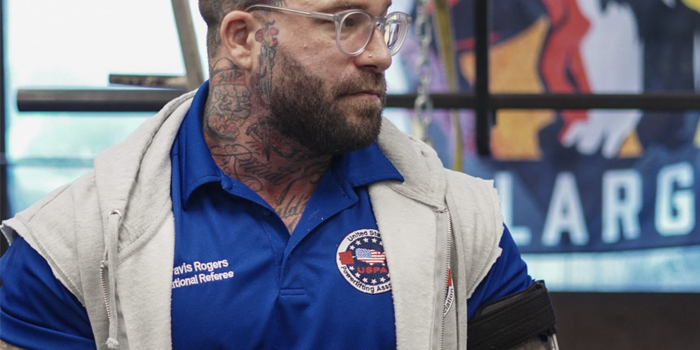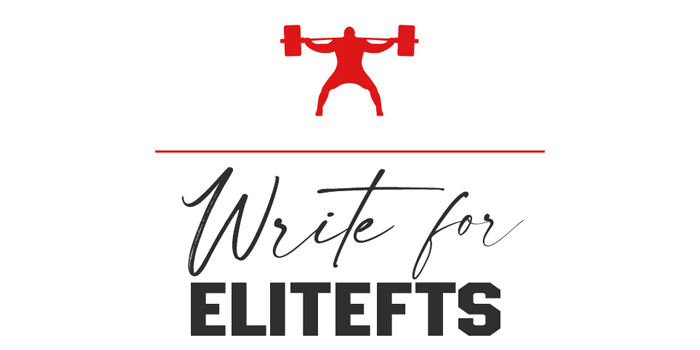
Injuries, unfortunately, are a part of our sport. Within any injury lies the ultimate irony, placed at either end of the spectrum of physical strength. The far left, the overall physical weakness, the body being open and prone to daily life and its stresses, and the far right becoming stronger than your body's smaller stabilizers, ligaments, and tendons can handle. No matter how much you prepare for it, and the longer you put your body under duress, the closer that day looms. The key is, what will you do about it, and how will you react?
While this split seems incredibly simple, many lifters in a state of defeat and panic feel lost. My goal here is to simply give an outline and sample plan of something that worked well for me. I am in no way a physical therapist or doctor, and I always recommend proceeding with caution. There is no magic timeline, but I assure you, doing something will feel much better than nothing and will keep those more focused individuals sane.
The Split
One of the biggest downfalls of having an injury is you become dumped into two categories: a lifter who overcomplicates things and stalls completely, or one who feels instantly defeated and therefore does not ever truly develop a plan of action. Many become “askholes,” asking everyone’s advice but never really putting anything into motion. My goal here is simple: provide a basic structure and plan to get you moving and into that next step of “Okay, so I am hurt. Where do I go from here?”
The following split was utilized in two different scenarios for myself, one after a distal triceps rupture with elbow surgery and the other after a Grade Two lat tear. All Push and Pull days are only done with one arm and used grip tools (stress ball or captains of crush grip to promote blood flow to the bad side, squeezing during the opposing side reps) and later progressed to mimicking the other side with bodyweight, empty dumbbell handle or two-pound mini weight.
Peptides for Injury Recovery
For eight weeks, reconstituted peptides BPC-157 and TB 500 delivered intermuscular were also used throughout this rehab split. I will have to advise you to do your research and use caution when it comes to this, as I cannot safely recommend a protocol and take no responsibility if you choose to do so. I purchase a multitude up front, knowing how long I will be running the protocol for, and also include BAC water (Bacteriostatic) to re-constitute the peptides. I use 2.5 CC of BAC in reconstitution in 5mg peptide bottles.
Using an Insulin pin (29 gauge; I buy mine right from Amazon in boxes of 100), I administer .3 units of BPC to the damaged area in both the AM upon waking and PM right before bed daily. TB was mixed in with the PM dose at .5 units. This is done as close to the site of injury as you can stand. Daily joint supplements such as a Cissus quadrangularis, glucosamine chondroitin, and turmeric were also included in varying brands during the eight-week regimen.
Items Needed:
- Gym with access to Cable Tower and Plate Loaded / Pin selections
- Bands (Elite FTS Micro Band)
- Dumbbells
- Something to squeeze for the injured side (Stress Ball, Tennis Ball, Crusher grip, etc.)
*Note: All dumbbell and cable work is done with a rehab tool on the side of the injury (see above), and cable/band is usually the lightest load/strength possible.
Injury Workout Plan
Day 1: Legs (BFR can be used for first four movements)
- Banded Leg Extensions with Holds every fifth rep - 3 x 25
- Seated Leg Curls with Holds every fifth rep - 3 x 25
- Alternating Single Leg Extensions (10 together, 10 left, 10 right, 10 together = 40 reps total x 3 Sets)
- Standing Alternating Single Leg Curls on a Machine or Cable (12 then 10 each leg = 1 set x 3 Rounds)
- Angle Leg Press (10 Wide, 10 Narrow, 10 Right, 10 Left, 10 Wide = 1 Set x 4 Rounds)
- Weighted Vest Walking Lunges (10 paces down and back = 1 x 4 Rounds)
- Finisher: 100 Banded Lying Leg Curls
Push: Day 2
- Machine Chest Press Wide + Close Grip (12 and 12 of each = 1 set x 3 Rounds)
- Single Arm Dumbbell Flat Press 3 x 20
- Flat Bench Dumbbell Skull Crushers + Tate Press (10 and 10 of each = 1 set x 3 Rounds)
- Standing Arnold Press - 3 x 12
- Seated Dumbbell Press - 3 x 12
- Incline Dumbbell Press 3 x 15
- Dumbbell Front + Lateral Raise (12 and 12 = 1 set x 3 Rounds)
- Single Arm Triceps Pushdown + Overhead Cable Extension (15 and 12 = 1 set x 3 Rounds)
- Grenade or Underhand Tricep Cable Kickback - 3 x 12
- Finisher: 100 Banded Tricep Pushdowns
Pull: Day 3
- Banded Straight Arm Pushdown - 3 x 20
- Seated Cable Underhand Lat Pulldown - 3 x 12
- Seated Overhand Lat Pulldown - 3 x 10
- Single Arm Low Row Machine or Cable - 3 x 10
- Single Arm T Bar or Chest Supported Row - 3 x 10
- Roman Chair / Back Extension - 3 x AMRAP
- Cross Body Hammer Curls - 3 x 10 each Arm (if Possible)
- Single Arm Cable Curl - 3 x 12
- Rear Delt Cable Crossover - 3 x 20
- Finisher: 100 Banded Good Mornings
Day 4: REST / OFF
As the pain subsides and movement becomes less restrictive, again, I highly suggest under the supervision of your physical therapist or overseer of your rehab process, new movements can be added in and replaced to start to get back to “normal.” For squats, I began working with no handed or single handed SSB squats, staying in the simple ranges of a 3 x 5. For deadlifts, I utilized a SPUD harness/apparatus that hooked to the bar and allowed for simulation without having to grip. The bench press was last to work its way back in, going from a PVC pipe and broomstick to an empty bar using board work to slowly gain my range of motion back.
Injury Recovery Final Thoughts
If you are going to take getting back to it as seriously as your training, please, above all, be cautious and know when to back off, as that is what likely got us here in the first place. Always seek the advice and supervision of a physical therapist who understands your goals and where you want to return. As easy as it is to overdo it, it is just as easy to undermine your ability to crawl back from where you have come. Never alter the destination, just the route followed.
With love and grumpy paws,
Papa Bear
Travis Rogers currently resides on the Eastern Shore of Maryland, where he owns and operates a strength training facility, “The Bear Cave.” He also works as a graphic designer, 10th and 12th grade ELA teacher, and is active in the community with his 501(c)3 charity organization for underprivileged children. He is the WRPF MD and DE state chairman, a national-level referee, and a meet director for the surrounding area.
Travis has been in the top-10 198 rankings for the last four years in both sleeves and wrapped divisions. After double quad rupture surgery, he's begun a new journey in equipment. In his first meet back from surgery, he totaled 2138 in the unlimited 198 division.










